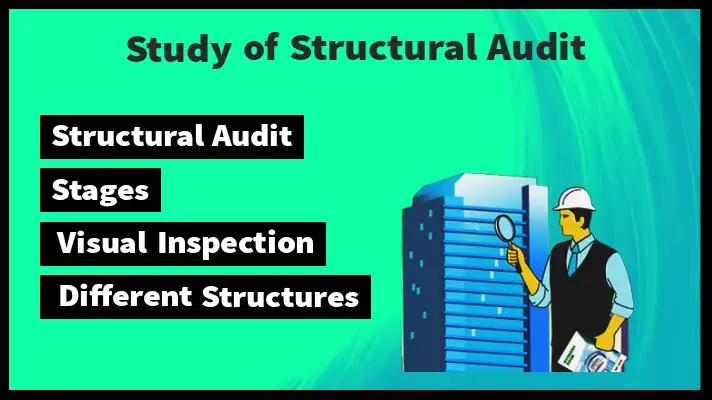Table of Contents
Introduction to Structural Audit:
Structural audit is a systematic process that involves evaluating the integrity, strength, and overall health of a structure. This comprehensive examination aims to identify existing defects or potential risks that might compromise the safety and stability of the building or structure.
Objectives of Structural Audit:
The primary goals of a structural audit are to ensure the safety of occupants, prevent structural failures, and identify maintenance or repair needs to extend the structure’s lifespan. Additionally, compliance with regulatory requirements and standards is a key objective.
Bye-laws related to Structural Audit:
Structural audits are typically governed by specific bye-laws or regulations set by local authorities or governing bodies. These regulations outline the requirements, procedures, and responsibilities associated with conducting a structural audit.
Importance of Structural Audit
A structural audit is crucial for maintaining the safety and integrity of buildings, bridges, and other structures. It plays a vital role in identifying potential risks and defects early on, allowing for timely repairs and maintenance to prevent catastrophic failures.
Various Stages Involved in Structural Audit:
- Preparation: Gathering relevant documents, plans, and the history of the structure.
- Visual Inspection: Initial examination to identify visible signs of distress or damage.
- Non-Destructive Testing (NDT): Utilizing techniques like ultrasonic testing, ground-penetrating radar, etc., to assess the internal condition without causing damage.
- Destructive Testing (if required): Involves removing samples for laboratory testing to determine material properties and strength.
- Analysis and Assessment: Evaluating collected data to determine structural integrity and safety.
- Reporting: Documenting findings, recommendations, and required remedial measures.
Visual Inspection: Scope, Coverage, Limitations

Visual inspection is a critical part of the structural audit process, involving a thorough examination of both the exterior and interior of the structure. However, it has limitations, as it cannot detect internal defects or accurately assess structural strength.
Factors to be Keenly Observed in Structural Audit:
- Cracks: Type, location, and extent of cracks can indicate structural distress.
- Dampness: Presence of dampness can indicate water leakage or poor drainage, leading to structural weakening.
- Corrosion: Corrosion of steel reinforcement or structural elements can compromise the structure’s strength.
- Alignment: Any deviation from the original alignment of structural elements could indicate structural movement or settlement.
- Material Defects: Assessing the quality and condition of construction materials used.
Aspects of Audit for Different Structures:
Audit of Masonry Buildings:
- Material Quality: Assessing the quality of bricks, mortar, and other construction materials.
- Stability: Checking for signs of bulging, leaning, or cracking in masonry walls.
- Foundation: Inspecting the foundation for stability and signs of settlement.
Audit of RC Frame Buildings:
- Concrete Quality: Evaluating the quality and strength of concrete used in construction.
- Reinforcement: Checking the condition and corrosion of steel reinforcement bars.
- Joints: Inspecting the integrity of joints between columns, beams, and slabs.
Audit of Steel Structures:
- Corrosion: Evaluating the extent of corrosion on steel members.
- Welds: Inspecting the quality and integrity of welds connecting steel members.
- Connections: Checking the condition of connections between steel members for signs of deterioration.
Conclusion:
In conclusion, a structural audit is a comprehensive process involving various stages and aspects to assess the safety and integrity of buildings, bridges, and other structures. It is indispensable for ensuring the safety of occupants and the longevity of the structure. Regular structural audits contribute significantly to preventive maintenance and avert potential disasters.

Hello! I’m Vaishnavi, a civil engineer who enjoys sharing how we design and build structures. My blog makes understanding engineering easy and interesting for everyone!

Comments are closed.